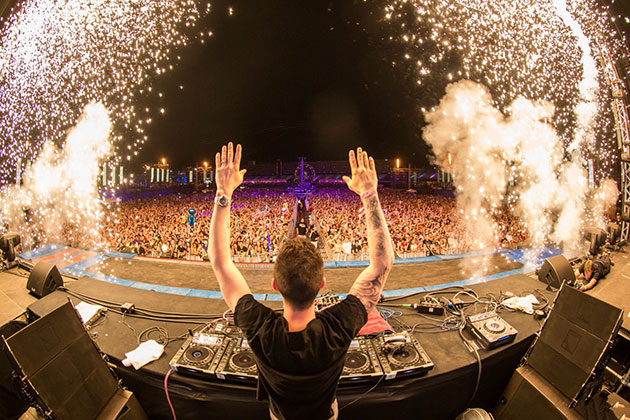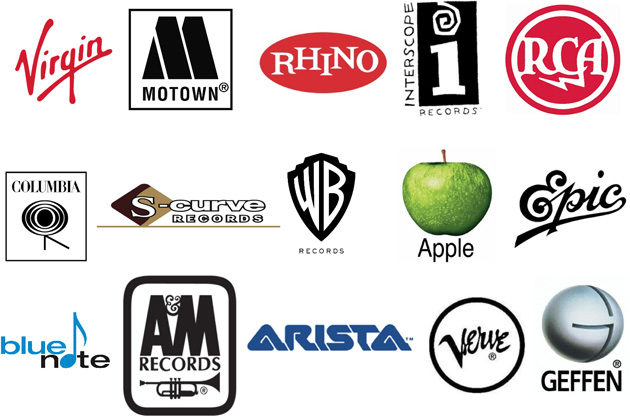Tiesto got some attention this past month for his latest In The Booth series. The music itself wasn’t particularly remarkable, but rather, a statement he made was: Getting signed to a major label is the next step his career needs. “I wanted to work with the biggest player in the industry,” he said, as he was signed to Casablanca, a subsidiary of Republic Records, which itself is part of Universal Music Group. “I still have my own label, of course, Musical Freedom, to develop new talent on. It would be really cool to have an album that’s Top 10 all over the world. With a partner like Universal, that’s a lot easier.”
It’s hard to believe that the producer who once topped DJ Magazine’s annual Top 100 list is looking for a boost – but on the other hand, it’s not. Just five years ago, seeing a DJ crack the Billboard 200 was a major feat; these days, David Guetta, Avicii, Calvin Harris, and Skrillex have already cracked the Top 20.
So with these young upstarts surpassing him not only on the annual DJ Mag list but also on the charts, signing to a major label – in this case, Interscope, UMG, Columbia, or Atlantic, rather than, say, a prominent EDM-centric label like Ultra or Spinnin’ Records – looks like the approach Tiesto needs to do to stay on top. But, is it the right move?
In today’s EDM climate, it is. Practically any EDM producer who scored an album that cracked the top 100 places of the Billboard 200 is signed to a major label, or a dance-music sub-label: Skrillex’s last two major releases were on Atlantic’s Big Beat; David Guetta’s Nothing But The Beat, No. 5 on the Billboard 200, came out on Virgin/EMI; and Calvin Harris’ 18 Months was released through Columbia, as well as his own Fly Eye imprint. The one exception appears to be Deadmau5, whose >Album Title Goes Here< reached No. 6 on the Billboard 200 after being released through Ultra and Mau5trap.
Similarly, any EDM producer ranking on the Billboard Dance/Electronic Songs and Album Charts (pop stars with EDM-produced hits excluded) comes from a similar background. While Beatport’s top hits often come from the bigger dance music players, the Billboard charts – particularly the Billboard 200 and the Hot 100 – represent an entirely new echelon – one outside genre success and, frankly, representing placement that makes you more well-known. Within these two major charts, you’ve got Zedd, signed to Interscope and mentored by Jimmy Iovine; Daft Punk, newly signed to Columbia; Avicii, whose releases go through PRMD and Universal; and Flux Pavilion, whose Freeway EP came out through Atlantic’s Big Beat. The only two artists with sole EDM label representation are Martin Garrix (Spinnin’, Musical Freedom, and Doorn Records for his up-and-coming career) and Cedric Gervais, also on Spinnin’.
In some senses, a major label gives the push an EDM artist needs – particularly after years of self- or limited label promotion. In better-case scenarios, like the Universal PRMD partnership for Avicii’s and Cazzette’s releases or Astralwerks’ relationship with EMI, the artists still get knowledgeable dance music representation, while the major label provides greater promotion for releases. It’s almost a win-win situation.
 On the other hand, as WhiteRiverRafting.com pointed out in its criticism of Zedd being signed to Interscope, direct major label representation results in being pushed as a pop star producer – great if you want it, but a middle-of-the-road path that takes points away from genre credibility. For Zedd, working with Iovine has meant collaborations with Justin Bieber and Lady Gaga (not to mention a good deal of media exposure in the press, top talk show appearances, and subsequent Billboard chart ranks) but also a chance to do more high-profile tours. Rather than the run-of-the-mill club appearances so many DJ/producers do, Zedd opened for Gaga during her Born This Way Ball tour last year.
On the other hand, as WhiteRiverRafting.com pointed out in its criticism of Zedd being signed to Interscope, direct major label representation results in being pushed as a pop star producer – great if you want it, but a middle-of-the-road path that takes points away from genre credibility. For Zedd, working with Iovine has meant collaborations with Justin Bieber and Lady Gaga (not to mention a good deal of media exposure in the press, top talk show appearances, and subsequent Billboard chart ranks) but also a chance to do more high-profile tours. Rather than the run-of-the-mill club appearances so many DJ/producers do, Zedd opened for Gaga during her Born This Way Ball tour last year.
As a counterpoint to this, the forced straight and narrow path might open itself up to greater exposure and higher-profile collaborations (not to mention the resulting chart ranks and sales) but it burns artists who don’t want to go in this direction. Diplo spoke about Major Lazer’s difficulties working with Interscope in a Huffington Post interview earlier in 2013, saying: “Interscope dropped Major Lazer when we asked for money for a video for ‘Get Free,’ and we sold 150,000 copies of that song. So that just proves that labels have no idea what’s going on anymore. They just want to jump on EDM d-ck – sh-t that sucks because they don’t feel the music but think it’s happening. We are in these streets.”
As much as many might want to say Diplo is full of it or has built a career on cultural appropriation, he’s right in this regards. Major labels are going after EDM because it’s a hot trend now – just as they did with electronica in the mid- to late-‘90s. As Billboard’s Kerri Mason points out, the sub-labels created over this time (Warner’s F-111, Reprise’s Kinetic, and Atlantic’s Big Beat) closed or changed direction.
Not everyone thinks this way, of course. When Mason interviewed Astralwerks’ Glenn Mendlinger about major labels representing dance music artists, he said: “Mainstream media has now embraced it in a much more credible and serious way. It’s very different from the electronica movement of the late ’90s, and the genre has now infiltrated pop culture.”
Even then, it’s still a gamble. We don’t know how long EDM’s mainstream popularity will last, and that could mean partnerships dissolving and artists being dropped. After all, if you look at Tiesto’s career, he had major label representation with 2007’s Elements of Life, released at the time through Sony BMG, as well as Ultra and his own Black Hole Recordings. For dance music, however, 2007 was an entirely different period, and even with this level of exposure, Elements of Life just got up to No. 71 on the Billboard 200 – yes, impressive for the time but now far and away from what Avicii, Guetta, and Zedd can pull these days.
Essentially, though, major label representation looks to be a necessity when dance music reaches a peak: When there’s demand, you get the greatest level of exposure possible. When there’s not, however, there’s still a chance that even the highest-ranking DJ/producer looks like a distant also-ran to that money-making pop star.




